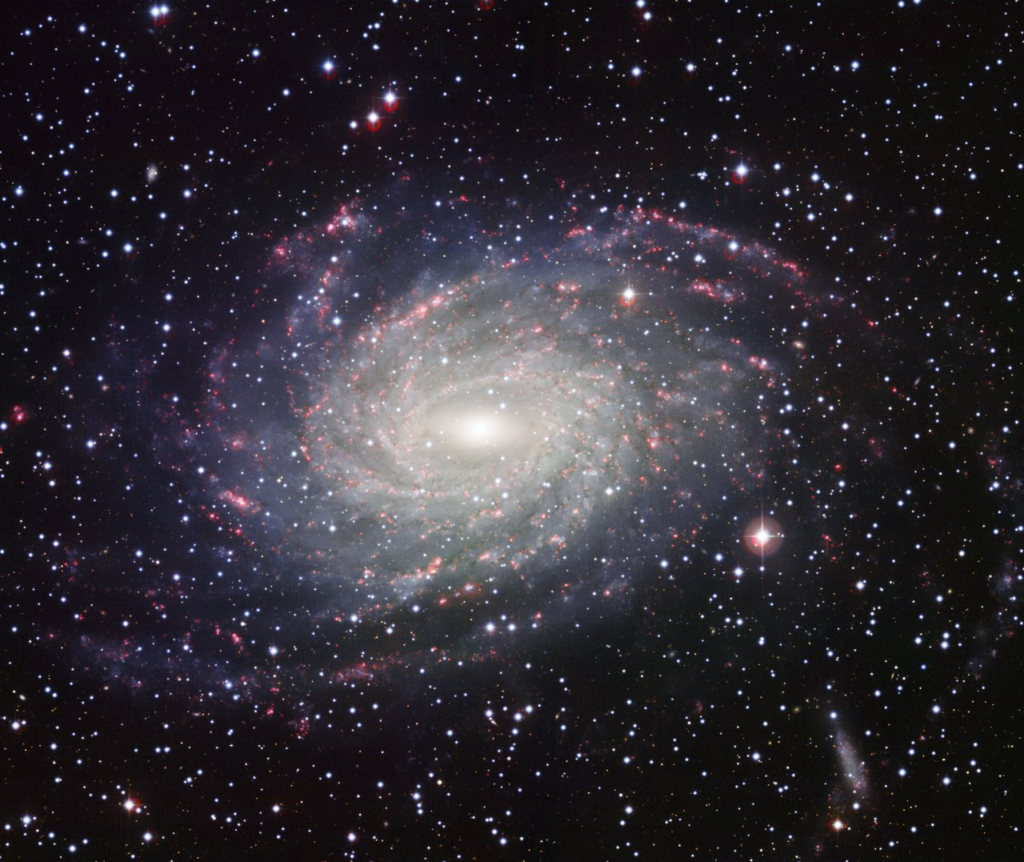Galaxy’s arms elbow stars into our neighbourhood

Many stars that now live near the Sun were born somewhere else in the Galaxy. Astronomers have just worked out how these migrants reached their new homes and what set them travelling – important details of our Galaxy’s story.
Stars form when massive clouds of interstellar gas collapse under their own weight. They carry the chemical fingerprint of this gas throughout their life.
The chemical make-up of the gas varies from place to place in our Galaxy, explained Dr Michael Hayden, a postdoctoral fellow in the Sydney Institute for Astronomy and a member of ASTRO 3D (the ARC Centre of Excellence for All Sky Astrophysics in 3D).
“The differences in gas composition are how we can tell where stars were born,” Dr Hayden said.
“The Sun formed pretty much where it is today but at least a quarter of its neighbours did not,” he said.
“Those stars were probably born closer to the centre of the Galaxy.”

Star trek
Stars trace elliptical paths around the Galaxy’s centre, like runners running around a sports track.
Two things can push them onto different paths.
“If stars interact with gas clouds or the Galaxy’s spiral arms, their orbits can get messed up. Messy orbits can take the stars further from the Galaxy’s centre than they were originally,” said Professor Joss Bland-Hawthorn, Director of the Sydney Institute for Astronomy and also a member of ASTRO 3D.
Called blurring, this process changes the shape of a star’s orbit but not its energy.
The Galaxy’s spiral arms can also give stars a kick, making their orbits bigger.
“This change in energy can cause a star to move outwards in the galaxy, a process called migration,” Professor Bland-Hawthorn said.
Both blurring and migration can make a star move a long way from its birthplace. Dr Hayden’s team wanted to know which process has pushed most stars to the Sun’s neighbourhood.
Chemical sleuthing
The researchers measured the chemical composition of almost 63,000 stars within 1600 light-years of the Sun, showing where each star probably started life.
Then they picked out the ones born nearer the Galaxy’s centre and looked at the shapes of their orbits.
“We worked out how eccentric the shape of each star’s orbit would have to be for it to reach the Sun’s neighbourhood via blurring,” Dr Hayden said.
Few were eccentric enough.
“We found that only about 20 per cent of stars that have moved into our vicinity could have gotten here through blurring,” Dr Hayden said.
“Migration must the dominant process. So not only are spiral arms where most stars are born, but they can also make stars travel a long way through the Galaxy,” he said.
“Spiral arms have really shaped the Milky Way we see today.”
This study has been submitted for publication in Monthly Notices of the Royal Astronomical Society. It used data from the GALAH (Galactic Archaeology with HERMES) survey made with the 4-m Anglo-Australian Telescope, plus measurements made with the European Space Agency’s Gaia space telescope.
“GALAH is a powerful complement to Gaia. Together they are helping us tease out the many different populations of stars that have built up over our Galaxy’s history,” Professor Bland-Hawthorn said.
The research team came from institutions in Australia, Germany, Slovenia and the USA.
Story written by Helen Sim
Publication
Michael R. Hayden, Joss Bland-Hawthorn, Sanjib Sharma and 13 co-authors, “The GALAH Survey: Chemodynamics of the Solar Neighbourhood”. https://arxiv.org/abs/1901.07565

